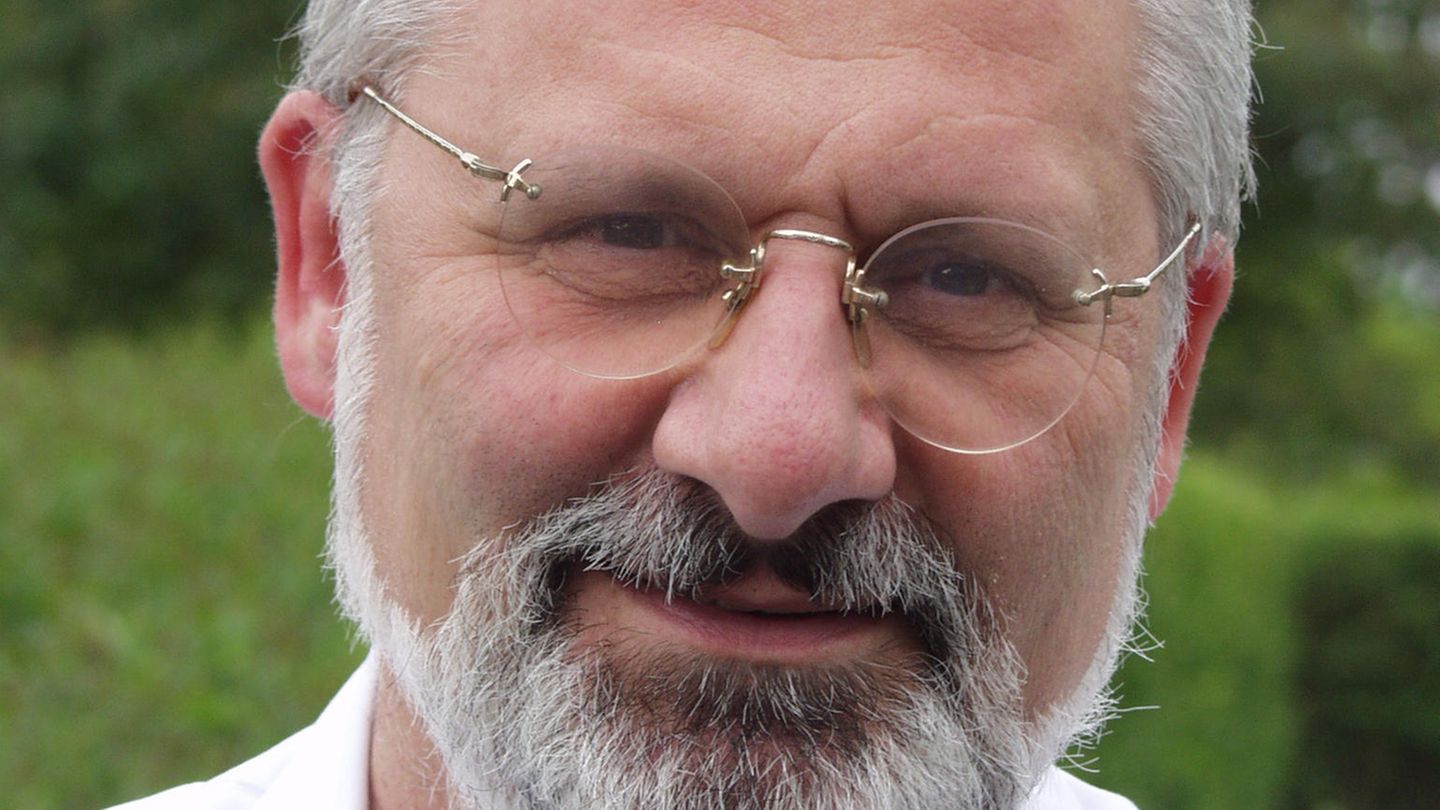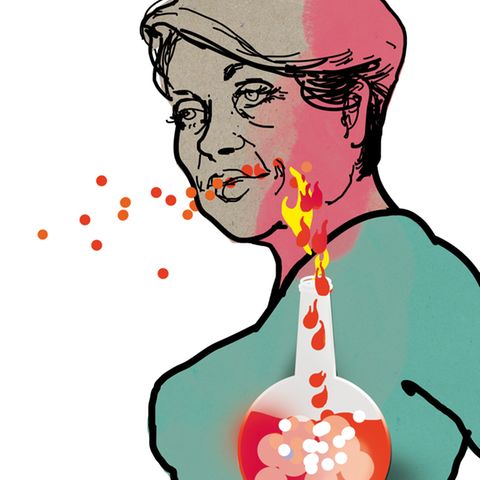Rare diseases
He is the “German Dr. House” – what can he surprise?
Copy the current link
Add to the memorial list
Rare diseases are surprisingly common: Professor Jürgen Schäfer reports on new illnesses, challenges and the influence of climate change.
Professor Schäfer, they have been dealing with puzzling and rare diseases for almost 40 years. Can what you encounter there, surprise you at all?
Rare diseases are more common than you think. An illness is rare if it does not occur more than five times in 10,000 inhabitants. However, since there are 6,000 to 8,000 different rare diseases, the sum of those who suffer from such is quite large. Around four million people are affected in Germany alone. If there were a “rare disease party”, it would come to the Bundestag with more than five percent! And yes, medicine is still exciting for me like a thriller and full surprises. Not too long ago, for example, in our laboratory, together with a veterinarian friend, we were able to demonstrate a worm called Dirofilaria Repens, which was previously extremely rare in Germany. In a young patient – in a tissue sample of an unclear skin tumor. Not only surprised us.
Why?
Actually, this thread worm only occurs as a parasite for dogs in warmer countries. It is fascinating and frightening at the same time that the development process of the dirofilaria larva can apparently also take place in a banal Rheinschnake in this country. The development of the larva in a snake depends heavily on the outside temperature. At 22 degrees Celsius it takes about 16 to 20 days. As host animals, the snacks have often been dead for a long time or have been eaten by birds. At a temperature of 28 to 30 degrees, it is twice as fast, and the larva only needs eight to ten days to develop in the schnke. As a result, this worm has an increasingly warmer summer days a realistic opportunity to spread in Germany.
How does an infestation in humans become noticeable?
Ultimately, humans are an absolute malfunction for this dog parasites. If a person is stung by an infected mosquito, the larvae of the worm usually nest in the skin tissue and trigger a painful swelling there. The surgeons removed this stove in our patient, and his extremely committed general practitioner asked us to find out what exactly it was here. Via gene analyzes from the tissue sample, we then came across the worm DNA from Dirofilaria Repens. The worm was removed by the operation, the patient does not have to expect consequential damage.
And yet every case is so exotic. What does everyday work look like for you and your team?
We are particularly scientifically involved in the area of lipid metabolism, which is why we look after patients who have rare fat metabolism. Within our university clinic, as with all university clinics, a variety of other rare diseases are also treated. This includes rare tumors that arise from hormone-forming cells, bladder-forming skin diseases, innate malformations of blood and lymphatic vessels, rare forms of leukemia, malignant diseases of the pancreas or fever syndromes. Since we mainly specialize in adult patients, we always see people who do not have a really rare illness in the real sense, but in whom poisoning, infection with parasites or “only” shows a rare effect of drug effects.
Rare side effect?
Once it was about a contraceptive: we had the case in which one patient developed depression after she was used a hormone -free spiral several weeks earlier. After removing the spiral, the depression that existed for years was gone. We were able to demonstrate a direct connection. The removal of the spiral replaced years of couch sessions. In another patient there was paralysis due to a lack of vitamin B12, caused by a remedy for diabetes. Precisely because diabetics often suffer from nerve diseases, more attention should be paid to vitamin deficiency.
The waiting times at the center you guided for undetected and rare diseases at the Marburg University Clinic have always been very long. Has the situation for patients now improved?
In the meantime there is a center for rare diseases at every German university clinic – with excellent experts who are in no way inferior to ours in Marburg. In this respect, I see improvements. Nevertheless, around 1000 inquiries per year still reach us at the Marburg University Hospital. Fortunately, we can forward some of those seeking help to other centers close to home. It is very helpful to find the nearest center. The work of patient associations such as, or from support associations such as that has already achieved a lot for those affected is also useful and meritorious.
So everything is good?
No, because the processing of the cases of inquiring doctors remains time -consuming. That is why the waiting time for those seeking help is still very long. Many affected people, but we also feel very stressful. It is important for us that inquiries come from the supervising general practitioners or clinics so that we can be sure that the recommendations we have also implemented are also implemented. This is all the more, since we currently do not offer a special consultation for patients directly, but see all findings in the sense of a second opinion process and recommend further steps on this. Close cooperation with general practitioners is important for this.
“The fate of people with rare diseases is increasingly perceived socially and recognized by those responsible for politically as an important task for our health system”
What about the personnel and financial resources of your department?
So far, our small center has been fully “cross -financed” through the Marburg University Hospital, for which we are very grateful. In the past few months, however, a lot has moved: Nationwide, the centers for rare diseases were recognized by the Federal Committee as an important care facility and included in the framework plan. For us in Marburg, the support that we get through our IT department, through our Institute for Artificial Intelligence and Digital Medicine.
Does politics support?
Fortunately, there are first approaches. For example, in Hesse, the “strengthening of the centers for undetected and rare diseases” was admitted to the new state government in their coalition agreement. Here we hope that the goals will also be implemented in the coming months. And we hope that other state governments in Germany will follow the example of Hessian politicians and also strengthen their centers. Because this helps many patients with a rare illness who are currently falling through the stitches in our actually very good health system. We are guilty of these people and their relatives that we are increasingly taking care of them – and not just on the last day of February.
Source: Stern
I’m Caroline, a journalist and author for 24 Hours Worlds. I specialize in health-related news and stories, bringing real-world impact to readers across the globe. With my experience in journalism and writing in both print and online formats, I strive to provide reliable information that resonates with audiences from all walks of life.





